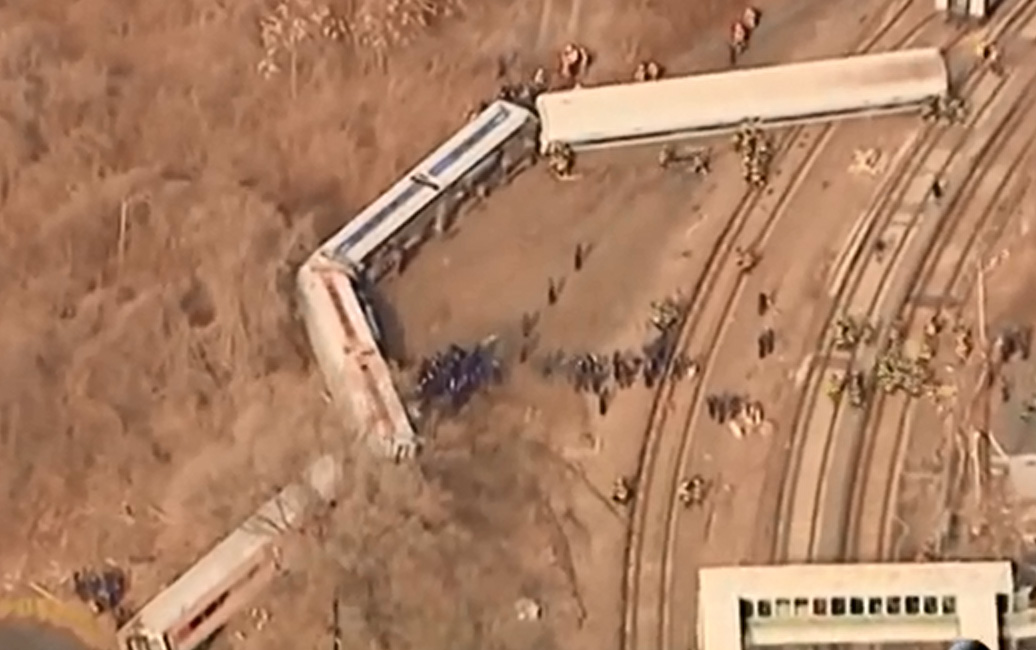How Safe Is Train Travel?

In the wake of a deadly New York City train accident that left four people dead and more than 60 injured, commuters may be wondering how safe it is to travel by rail.
An early morning train into New York City went off the rails Sunday (Dec. 1) while navigating a bend in the tracks. The accident is currently under investigation, but officials with the National Transportation Safety Board (NTSB) announced today that the train was going 82 mph (132 km/h) as it entered the curve, where the speed limit is 30 mph (48 km/h), according to CNN.
Despite the dramatic nature of train accidents like Sunday's derailment, and a devastating accident in July that left more than 79 people dead in Spain, travel by rail still compares favorably to other types of travel, including airplanes and automobiles. [The 5 Real Hazards of Air Travel]
An average of about 42,000 people died in the United States from all transportation-related causes between 2000 and 2009, making transit the single largest cause of accidental deaths, according to a 2013 study published in the journal Research in Transportation Economics.
Safe travels
Despite that high figure, the annual rate is a big improvement over earlier years: The 2010 fatality rate, for example, is just one-third of the 1975 rate (1.11 fatalities per 100 million miles in 2010 versus 3.35 fatalities per 100 million miles in 1975). The reduced rate is believed to be due to newer safety features in passenger vehicles: air bags, anti-lock brakes and other improvements.
In 2011, 759 deaths in the United States were attributed to rail transit, according to the NTSB. Almost 500 of these deaths, however, were not passenger fatalities, but were pedestrians and people in cars stopped on rail right-of-ways. Some experts believe that as many as 20 percent of these deaths were suicides.
Get the world’s most fascinating discoveries delivered straight to your inbox.
The NTSB data also found that 494 deaths in 2011 were attributed to aviation, including air taxis; 800 U.S. deaths were blamed on marine transportation, especially recreational boating.
Blood on the tracks
But compared with these three modes of transportation, highway travel is a bloodbath: The NTSB reports that 32,367 deaths in the United States were blamed on roadway accidents, including more than 4,400 pedestrian deaths. More than three-quarters of these deaths (25,865) involved passenger cars, motorcycles, light trucks and vans.
It's difficult, however, to compare the safety records of different modes of transportation. While vehicle and train accident rates are usually cited on a per-mile basis, that analysis doesn't work as well for airplanes, since the vast majority of air accidents occur during takeoff and landing, not in midflight.
There are railway safety innovations that might have helped prevent the New York City train accident. Positive train control, or PTC, is a technology that can automatically stop or slow a train before train-to-train collisions, high-speed derailments or train travel on tracks that are off-limits due to repairs or maintenance, according to the Association of American Railroads.
By 2015, PTC must be installed on all rail lines that carry passengers or certain hazardous materials, per the Rail Safety Improvement Act of 2008. While it's not certain that PTC would have prevented the New York City train accident, it is designed to automatically slow trains as they approach bends in the track such as the one where the high-speed derailment occurred.
Follow Marc Lallanilla on Twitter and Google+. Follow us @livescience, Facebook & Google+. Original article on LiveScience.



